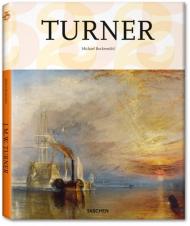Джозеф Мэллорд Уильям Тернер - величайший из живописцев. Каждая его акварель - это "пейзаж плюс человеческая душа", его формы выходят за рамки обычной реальности, он первым преодолел границы традиционной европейской живописи и еще за шестьдесят лет до Матисса и Пикассо начал современную революцию в искусстве. Выставки шедевров Тернера и в наши дни собирают миллионы поклонников его творчества по всему миру.
Среди лучших биографов и знатоков творчества Тернера - Эрик Шейнс, автор многих книг о художнике, отмеченных престижными международными премиями. Одну из этих книг вы держите в руках. Первый ее раздел содержит подробную биографию великого Мастера - увлекательный рассказ о его семье, становлении его как живописца, мировосприятии, творческих взлетах и разочарованиях, поисках своего места в искусстве и непростой судьбе художника. Второй раздел включает богатое собрание выдающихся произведений Тернера - от самых ранних, созданных в 1790-е годы, и до последних, - сопровождаемое глубоким анализом и интересными наблюдениями.









